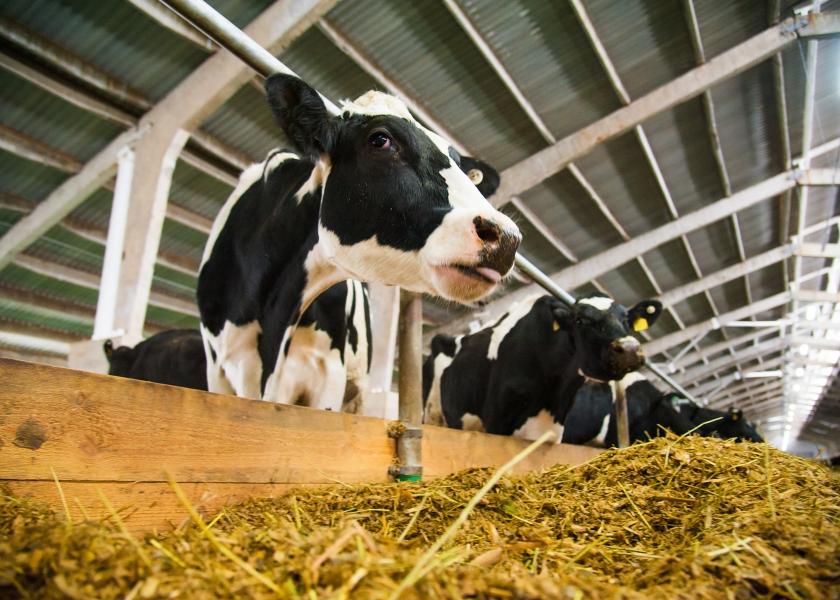The Tale of Two Feed Strategies: When Less is More

How do you strike the delicate balance of feed-to-output ratio?
In the give-and-take of ration balancing, the age-old question, “How much should I feed my cows?” has no cookie-cutter answer. However, research published this month in the Journal of Dairy Science highlights two scenarios to consider.
Feed Efficiency vs. Cost
If you’ve looked at your low-producing cow and wondered if she is earning her feed, researchers in Israel say she will likely be more feed-efficient when eating less. However, there is one additional factor to consider.
The study, published this month in the Journal of Dairy Science, defined inefficient cows as having a residual feed intake greater than 3 kg DM. Residual feed intake is the difference between what a cow should be consuming based on her age and lactation cycle and what she is actually consuming. Half of the inefficient cows were fed about 13% less feed than the other half, which were fed ad libitum.
At the end of the study, cows on the restricted diet consumed an average of 3.9 kg less feed per day but produced only 2 kg less energy-corrected milk than cows fed ad libitum.
And, just in case you’re thinking, ‘Wow. But I wonder exactly how many minutes the cattle spent eating,’ the average meal length for cattle in both periods was 37 minutes. The cattle fed ad libitum consumed more feed because they chose to go to the trough more times.
Before you launch a “cow diet” for your low-producers, though, researchers caution profitability depends on the market just as much as the ration. For example, in Israel, the price of milk is more than double the cost of total mixed ration consumed daily. Therefore, feeding inefficient cows extra for the additional milk is still most profitable despite the lower feed efficiency. That is a decision unique to each farm’s market conditions.
Components vs. Volume
Meanwhile, researchers in Finland considered how much concentrate should be fed in a grass silage-based diet.
Cattle fed a ration with a low forage-concentrate ratio (30-70) produced 15% more milk and lactose than cattle fed a high forage-concentrate ratio (70-30). The two groups produced a similar amount of fat, cows on the low forage-concentrate ration had a 13% lower fat concentration since they produced a higher total volume of milk.
Researchers also compared the grass silage-based diets to a red clover silage-based diet with a 50-50 forage-concentrate ration. Cows fed the red clover silage-based diet produced smaller milkfat globules (MFG). MFG size influences functional properties of dairy products, and smaller MFGs have components especially beneficial to human health, according to researchers.
Because your ration depends on your market, as described by Israeli researchers, how much concentrate your farm feeds might depend on specific component and volume pricing. It may be important to consider whether your customers are willing to pay a premium for potential health benefits from smaller MFGs despite a lower fat content.
What do you think? Let us know in the comments!
Related Articles
Four Steps for a Higher Fat Test
Which Makes More Milk: Alfalfa or Grass?
Making Sense of Feed Efficiency







